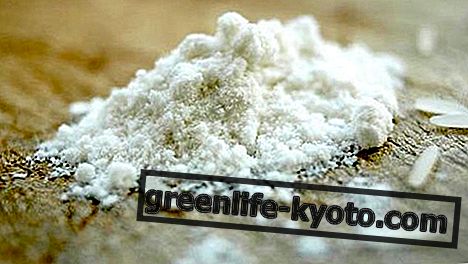
Opiate painkillers are drugs based on opioids, or chemical compounds derived from opium, which produce pharmacological effects similar to those of morphine. The most used opiate painkillers are morphine, codeine, oxycodone, hydrocodone, fentanyl, oxymorphone, hydromorphone, buprenorphine, viminol. These analgesic substances are very powerful and are used, in Italy, for the management of chronic pain, for acute postoperative pain and in patients in terminal living conditions.
The autopsy results of Prince's unexpected death are not yet ready, but the media reported that the musical star had in his possession, when he died, a prescription for an opioid-based painkiller, Percocet. Unconfirmed rumors suggest that Prince not only used prescription opiates as painkillers, but that he may have been addicted to them.
If this were the case, Prince would be just one of the millions of other Americans who have become addicted to opiates because of the ease with which they prescribe themselves with the support of the pharmaceutical industries.
The government has made numerous efforts to "educate" doctors about the dangers of opioids, and has improved warnings on some drugs. Regulatory agencies have heavily used drug manufacturers, traffickers, and even shipping giants, Federal Express and United Parcel Service (who have knowingly delivered controlled substances and prescription drugs from online pharmacies to people who are later dead or who accidentally caused the death of others ", said a federal lawyer).
But there are two things the government has not done.
1. Did not recognize that the opioid dependence epidemic was created by Big Pharma ( see note 1. at the end of the article ).
2. And it has not stopped the continuous flow of new dangerous drugs placed on the market.
Indeed, the same day that the US Food & Drug Administration (FDA - see note 2. at the end of the article ) announced its intention to adopt stricter restrictions on hydrocodone-based products, such as Vicodin, the agency has also approved the long-lasting drug, Zohydro, which has a potential for abuse 5 to 10 times higher than OxyContin. The Opioid Actiq (fentanyl) and the long-lasting hydrocodone (Zydone) are still easily available.
Don't blame the users, blame the pharmaceutical industry
The pharmaceutical industry has favored the spread of opioid addiction in four ways.
1. It has introduced to the market long-acting opioids, such as the OxyContin that could be crushed and snorted, or injected to produce the same effect as heroin.
2. The industry has also changed the guidelines for the treatment of pain, so that opioids have become the first choice in case of back pain - cases in which the prescription of opioids should never be justified.
3. The pharmaceutical industry has pushed and promoted the long-term use of opiates even though there are no scientific studies showing their efficacy or safety, according to respected medical groups such as the Cochrane Collection.
4. And finally, it has badly informed doctors, patients and the public, claiming that only "some" people can become addicted to drugs, when in fact drugs create dependency, period. In fact, before the return of opioids promoted by the pharmaceutical industry, narcotics were administered only after surgery, accidents and for palliative care in chronic and terminal diseases.
The result is what anyone familiar with the history of narcotics could have predicted.
Over 47, 000 people in the United States die each year from drug overdoses, especially opioids, as reported by the CDC ( see note 3. at the end of the article ).
Opioids are now prescribed for almost all "the causes of human suffering, " wrote the Business Week Journal in 2012. "Back pain, fibromyalgia, toothache, cancer, depression, divorce, boredom, mental illness, unemployment, replacement of the hip or withdrawal symptoms ”.
So many Americans are taking opioids that during the 2016 Super Bowl ( see note 4. at the end of the article ) broadcast an advertisement for the treatment of constipation related to opioid intake.
The diffusion of opiate use has created confusion among patients who really feel pain, false "patients" who sell drugs and "real" patients who have become addicted because they have been treated with opioids for too long periods, other words, for inadequate medical care.
Pain clinics cut off these patients, although they are often largely responsible for their addiction. This is a classic case of blaming the victim. Patients who legitimately fear withdrawal symptoms and the return of pain when they no longer receive opioids often resort to heroin . That's why we now also have an epidemic of heroin addiction.
How the pharmaceutical industry sells opioids
It is no secret that the drug industry pays doctors and medical associations to promote drugs . So many doctors receive payments directly from the pharmaceutical industries, which in 2012, when the FDA ( see note 2. at the end of the article ) attenuated its standard conflicts of interest to allow doctors to participate in advisory committees, the agency did not find enough doctors who didn't pocket money from the Drug Industry.
A few years ago, a marketing collaboration between the Merck drug manufacturers and the American Academy of Pediatrics showed that the marketing of the drug for children is also full of conflicts of interest.
So it is no surprise that opiate manufacturers have paid doctors, associations and even universities to help with the sale of opiates.
According to investigative journalist John Faube, half of the experts at the American Geriatrics Society who reviewed opioid intake guidelines in 2009 " have had financial ties to opioid-producing companies, paid as speakers, consultants or coaches."
What change did the experts make to the guidelines? "That of painkillers that do not require a prescription, such as ibuprofen and naproxen, which are rarely used because doctors prefer instead to prescribe opioids for all patients with moderate to severe pain, " the American Geriatrics Society said .
The University of Wisconsin's Pain & Policy Studies Group received $ 2.5 million from opiate manufacturers when the group pushed for easing opioid use guidelines, Fauber reports.
To facilitate the approval of new opioids, a lobby of the pharmaceutical industries called IMMPACT, pushed to get what is called " enriched enrollment ", which allows pharmaceutical companies to get rid of subjects who do not respond well to a drug or do not tolerate it, before the start of a clinical trial.
This makes the approvals faster and cheaper for the Pharmaceutical Industry. This practice obviously ensures that we will never know what happens when the general public uses the drugs.
To assure doctors and patients that drugs are not addictive, a pain guide called " Finding Relief: Pain Management for Older Adults ", funded by opioid manufacturer Janssen with the American Geriatrics Society and the American Academy of Pain Medicine, referred to as a "partner", it actually says:
"Myth : Opioid drugs always create a dependency
Fact : Many studies show that opioids rarely create addiction if used correctly for chronic pain management " .
Overdose is not the only problem
Despite the promotion of the pharmaceutical industry for the long-term use of opiates against chronic pain, experts say that the pills actually make patients feel worse .
Sridhar Vasudevan, an internationally recognized specialist in pain, says that opioids increase patients' conviction of being sick, making them dependent on the health system and doctors, and discourages them from pursuing a more effective multidisciplinary treatment for their pain, including treatments offered by physiotherapists, psychologists and other professionals.
According to Dr. Vasudevan , opioids also decrease testosterone levels and the immune response, and cause personality changes, such as irritability, depression, demotivation syndrome and antisocial behavior or law-breaking behavior.
In Responsible Opioid Prescribing, Dr. Scott Fishman states that opioids present many risks, including "the high risk of fracture due to effects on bone metabolism and falls", and increased risks for the elderly and "for those with renal or hepatic failure; individuals with cardiopulmonary disorders, such as chronic obstructive pulmonary disease (COPD), congestive heart failure (CHF), sleep apnea, mental illness, and in patients who combine opioids with other respiratory tranquilizers such as alcohol, sedative-hypnotics, benzodiazepines or barbiturates. "
There is another danger associated with opiates like Percocet, the one that Prince was taking. These short-acting opioids contain paracetamol (Tylenol), which in high doses or after prolonged use can cause liver damage and even liver failure. The risks are high and have prompted government agencies to issue ever stronger warnings.
Ironically, long-acting opioids, such as OxyContin, were intended to spare patients these liver risks. "Because short-acting drugs, which are taken as needed, take 20-30 minutes to work and last only 2-4 hours, the patient's pain peak is often missed. This can lead patients to overcome their doses and risk abusing them, "writes Dr Vasudevan.
"Secondly, most short-acting opioids are combined with acetaminophen (Tylenol) which causes liver damage in high doses. Long-acting opioids lack Tylenol, so if patients are forced to take small doses of short-acting opioids to deal with pain, there is less risk. "
Final irony
There is a final irony in the promotion that the pharmaceutical industry implements for long-acting drugs. The pills only alleviate pain by 20-30% .
"If you give an antibiotic for a UTI (urinary tract infection) and this does not cure the infection, you stop taking it, " wrote physician Richard W. Rosenquist, in a Cleveland Clinic pain newsletter. "The same principle applies [to opioids]. Many patients treat themselves with opioids for a long time, without obtaining a good result, but their suppliers do not question themselves and do not experience anything different ”.
And here is the greatest irony about the long-term use of opioids. Opioids often cause the patient to perpetuate pain due to a phenomenon known as " opioid-induced hyperalgesia " (opioid -induced hyperalgesia or OIH - see note 5. at the end of the article ), which is not advertised by the pharmaceutical industry.
"If you take 100 of patients who are on treatment for chronic pain, move them away from the medicines and have them practice three pool therapy exercises, many of them will feel better. The reason is that opioids are usually the cause of pain due to opioid-induced hyperalgesia, "says Dr. Harry Haroutunian, medical director of the Licensed Health Professionals Program at the Betty Ford Center .
Clearly the millions of patients who take opioids today do much more for the "health" of the pharmaceutical industries than they really do for them .
Source: Was Prince the Latest Opioid Casualty? by Martha Rosenberg
NOTE
1. Big Pharma is an expression used in the United States to refer to pharmaceutical companies with revenues of over 3 billion dollars.
2. Information valid for the United States. The Food and Drug Administration is the body of the American government that regulates the products that are put on the market, from food to ethical drugs.
3. Information valid for the United States. The Centers for Disease Control and Prevention are organisms for disease prevention and control, managed by the public health of the United States of America.
4. The Super Bowl is the final of the American professional football league.
5. Hyperalgesia is the condition for which sensitivity to pain increases due to injury to the nerves of the peripheral nervous system and nociceptors. Continuous and prolonged use of opioids can lead to hyperalgesia. This is often compensated by the patient through an increase in the dosage of the drug, thus triggering a vicious circle in which sensitivity to pain increases with increasing doses of drugs taken.













